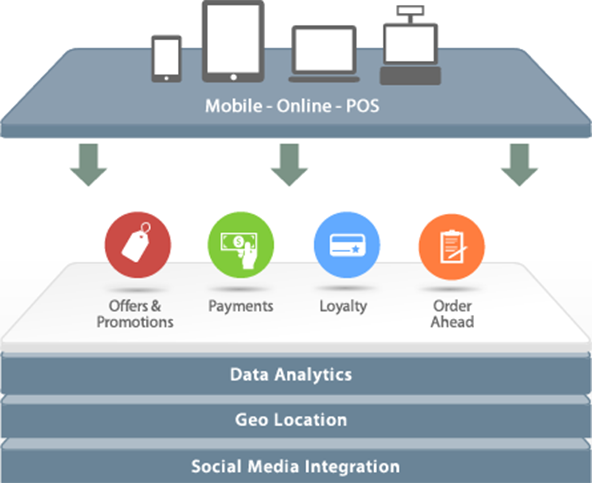Your Merchant Account Is Terminated — Now What?

So you’ve just received the dreaded termination notice from your merchant account provider. You may have even seen it coming if your transaction activity has been heavily scrutinized for the past week or two and no indication has been given about the status of your payment processing account. Alternatively, it may all have come out of the blue — for example, your processor may have suddenly decided that it would no longer serve businesses in your industry, for some reason or other.
Whatever your processor’s reasons for shutting you down may be, the important question is what you should do now — how do you find a new payment processor, one which would be unfazed by whatever may have happened with your previous merchant account and offer you reasonable terms of service? Well, servicing the high-risk end of the payment processing industry as we are, you may not be surprised to learn that at UniBul we get to work with terminated merchants all the time. What we’ve found over time is that re-enabling businesses to accept credit cards is mostly dependent on the merchants’ willingness to do what is necessary. More often than not, merchants are not following our suggestions, diminishing their chances of success in the process. Oblivious to the new reality, they wrongly believe that what worked in the past would work again. Well, you can follow their example and end up with no merchant account at all or do what I suggest below and start taking cards once more. The choice is yours.
Surviving a Merchant Account Shutdown
Similarly to the setting up of your original merchant account, opening up a replacement account is a process, only a more involved one. Listed below are the steps you will have to take to go through it successfully.
1. Find out why you were terminated. It all starts here. Your prospective processor would want to know precisely why your previous service was shut down and you shouldn’t guess what the reason is, but ask your previous processor for a written statement. Be sure to also ask them whether or not your business and you personally, as its owner, have been placed on the Terminated Merchant File (TMF) / MATCH list. Unpleasant as such a placement may be, there are ways to work around it, but you must know the facts before the application process gets under way.
Also, do not hide information from your prospective processor, either about the causes for the termination or about a TMF placement. They will eventually find out what had occurred, but keeping them in the dark at the beginning may lead the processor to take the wrong course of action. And when they do find out, they may be unwilling to reverse course — why bother to work with a merchant who is not telling them the truth?
2. Get you last statements. Make sure that you save your six latest processing statements from the terminated account, while you still have access to the online reporting system. These will be requested later during the new application process and not being able to provide them would not look good at all.
3. Contact only high-risk payment processors. It is important that you recognize your limitations. At this point, even if you were not placed on the TMF, a regular, low-risk merchant account would no longer be an option and the First Datas and Chase Paymentechs of the payment processing world would be of no use for you. Whatever the cause for the termination, mainstream merchants would be scared away and you need to start looking for a high-risk processor.
4. Be honest. When you contact your chosen high-risk processors, be completely honest and matter-of-fact about your situation. This is where we usually have the most difficulties, as merchants would inevitably try to make their situation look better than it actually is. Don’t do that, as it does you no favors. As already noted, the processor will eventually find out exactly what happened with your terminated merchant account. Having given them incomplete or false information would cause them to lose trust in you and you would end up being offered worse terms than you might have been offered, had you been more straightforward. That is, you would be offered worse terms if the processor decides to work with you in the first place. Even high-risk processors don’t work with everyone.
It is important for you to recognize that high-risk payment processing is difficult enough as it is and there is no need to make it even more difficult. In particular, tell your processor that you were placed on the TMF, if you were. Setting up a merchant account for a TMF-ed business is a completely different type of thing, so by making it seem as though you were not blacklisted, you’d be wasting everyone’s time, yours very much included.
5. Fill out all of the required paperwork. Do it promptly and provide all of the requested supporting documentation. Don’t complain about how much paperwork you are asked to supply and how time-consuming it is to go through it all — we know! If we could simplify the process, we would have done it long ago, as we also don’t like dealing with more paperwork than we have to. But we get to work with banks all over the world, a multitude of regulatory environments, a host of national regulations, etc. So just give us the requested paperwork as quickly as you can and let us do our job.
6. Be patient. The high-risk underwriting process can take considerably longer to run its course than the one used for regular merchant accounts. When you think about it, it makes sense, as underwriters need to exercise some caution with merchants whose accounts have been shut down by other service providers. Still, it is true that the high-risk underwriting process can sometimes take much longer than it could be justified. But that’s just the way it is.
7. Prepare to be scrutinized. Once your application is approved and your account is set-up and running, your activity will come under heavy scrutiny. Your new processor will closely monitor your activity to ensure that you are using your account in compliance with the terms of your agreement. They may ask you to provide proof of some, or even all, of your transactions. If you receive such a request, don’t argue with your processor, but give them what they need, quickly. Once your processor is satisfied that you are using your merchant account properly, they will let up the pressure and let you go on with your business.
8. Be compliant. If you find this last advice redundant, you haven’t spent much time in high-risk processing. Most high-risk merchant accounts are terminated within the first three months of their existence. To avoid that fate, you have to remain in full compliance with the terms of your agreement. For as long as you do that, you will have little to worry about.
The Takeaway
So these are the basics. See, as processors, we are required to comply with all kinds of regulations and can take no shortcuts in doing so. An unfortunate side effect is that the application process becomes more convoluted than anyone might wish. But it is worth keeping in mind that it is in our own best interest to find a way to work with you — otherwise we make no money. So give us a chance and follow my suggestions — if you did that you would be very likely to end up having a new merchant account and, even more importantly, keeping it for as long as you need it.
Image credit: Flickr / ladycynamin.

